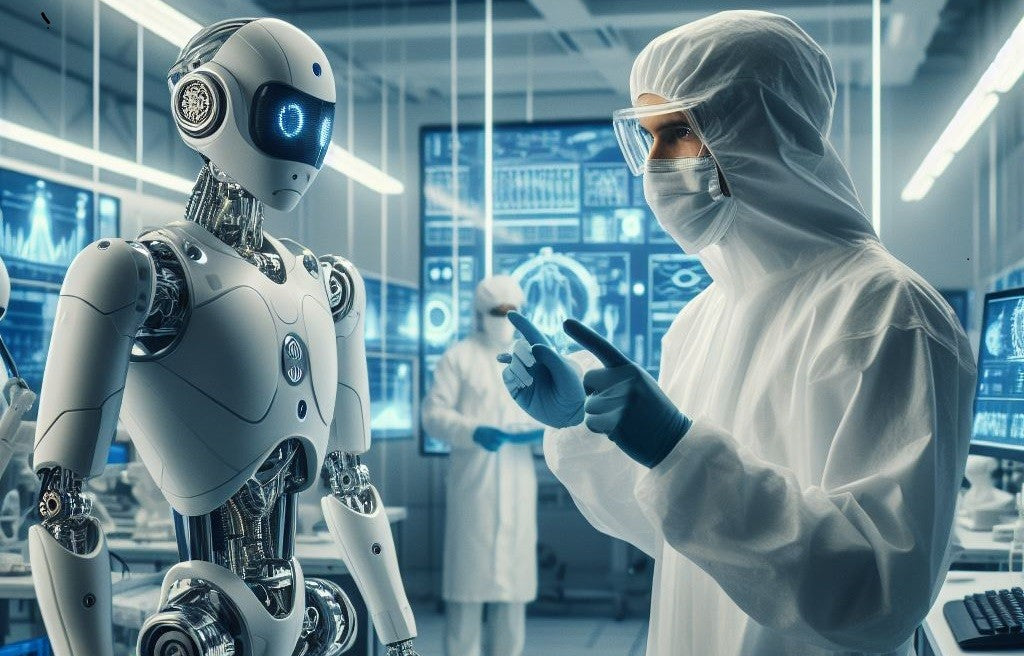
Artificial Intelligence Robots: Tireless Companions Revolutionizing Industries
Share

Artificial Intelligence (AI) robots are not just the stuff of science fiction—they are the backbone of the next industrial revolution. These intelligent machines are designed to perform tasks requiring human-like intelligence, such as decision-making, learning, and adapting to new environments. As industries across the globe embrace automation, the AI robotics market presents a lucrative opportunity for investors to capitalize on a technology-driven future.
What Are AI Robots?
AI robots combine advanced algorithms and robotics to handle massive data, perform complex tasks, and deliver high accuracy with unmatched efficiency. Their applications span industries including manufacturing, healthcare, customer service, and even military operations. By automating repetitive tasks, AI robots enhance productivity, reduce costs, and enable businesses to stay competitive.
Types of AI Robots
AI robots come in various forms, tailored for specific applications:
1. Industrial Robots
o Used in manufacturing for tasks like welding, painting, and assembly.
o Equipped with safety features such as sensors and barriers to ensure safe collaboration with human workers.
2. Service Robots
o Designed for customer service, healthcare, and home care.
o Employ sensors, cameras, and machine learning algorithms to interact intelligently with their environment.
The Impact of Advanced Technologies on AI Robots
AI robots are powered by cutting-edge technologies like computer vision and machine learning, which amplify their capabilities:
· Computer Vision
This technology enables robots to interpret visual data, allowing them to perceive and understand their surroundings. Applications range from self-driving cars navigating roads to service robots identifying objects in hospitals and hotels.
· Machine Learning
Machine learning empowers robots to learn from data and improve over time without explicit programming. For example:
o Manufacturing robots can adapt to new tasks.
o Search-and-rescue robots can navigate complex terrains.
The fusion of these technologies enables AI robots to perform with precision, adapt to dynamic environments, and tackle challenges that were previously insurmountable.
AI Robots in Major Economies: A Global Perspective
United States: Leading with Innovation
The U.S. has been at the forefront of AI robotics, leveraging them in industries such as:
· Military and Defense: Drones and autonomous systems for surveillance and precision operations.
· Warehouse Automation: AI robots streamline inventory management, reducing errors and enhancing operational efficiency.
· Healthcare: Robots assist in surgeries, diagnostics, and patient care, ensuring safety and precision.
The increasing emphasis on automation and innovation in the U.S. positions its robotics market for sustained growth.
China: A Manufacturing Powerhouse
China’s rapid adoption of AI robotics is driven by:
· Cost Efficiency: Manufacturing robots at lower costs than global competitors.
· Government Support: Policies such as the 5-Year Robotics Plan aim to establish China as a global leader in robotics.
· Industry Integration: Robots are deployed in automotive, pharmaceutical, gaming, and military sectors.
China’s production of industrial robots reached 202,000 units in the first half of 2022 alone, reflecting its dominance in the market. Initiatives to integrate AI robots in healthcare, agriculture, and other sectors further bolster its growth trajectory.
Competitive Landscape
The AI robotics market is highly competitive, with major players leveraging strategies like:
· New Product Launches
· Strategic Partnerships and Collaborations
· Acquisitions and Global Expansion
Leading companies driving innovation include:
· IBM
· Intel
· Microsoft
· NVIDIA
· Softbank
These firms are investing heavily in research and development, ensuring their leadership in a rapidly evolving market.
Why Invest in AI Robots?
1. Expanding Applications
From manufacturing to healthcare, the versatility of AI robots ensures a broad market reach.
2. Technological Advancements
Innovations in AI, machine learning, and computer vision are unlocking new possibilities, driving demand and profitability.
3. Global Demand
Governments and industries worldwide are embracing robotics to address labor shortages, enhance efficiency, and maintain competitiveness.
4. Long-Term Returns
The automation wave promises reduced operational costs, higher productivity, and consistent quality—making AI robots a profitable investment.
The Future Is Automated: Invest in AI Robotics Today
The rise of AI robots signals a paradigm shift in how industries operate. For investors, this market represents a unique opportunity to align with the future of technology and innovation. By investing in AI robotics, you not only support a transformative industry but also position yourself for substantial financial growth in a world driven by automation.
The time to act is now—embrace the revolution and be part of a future defined by intelligent, tireless companions.